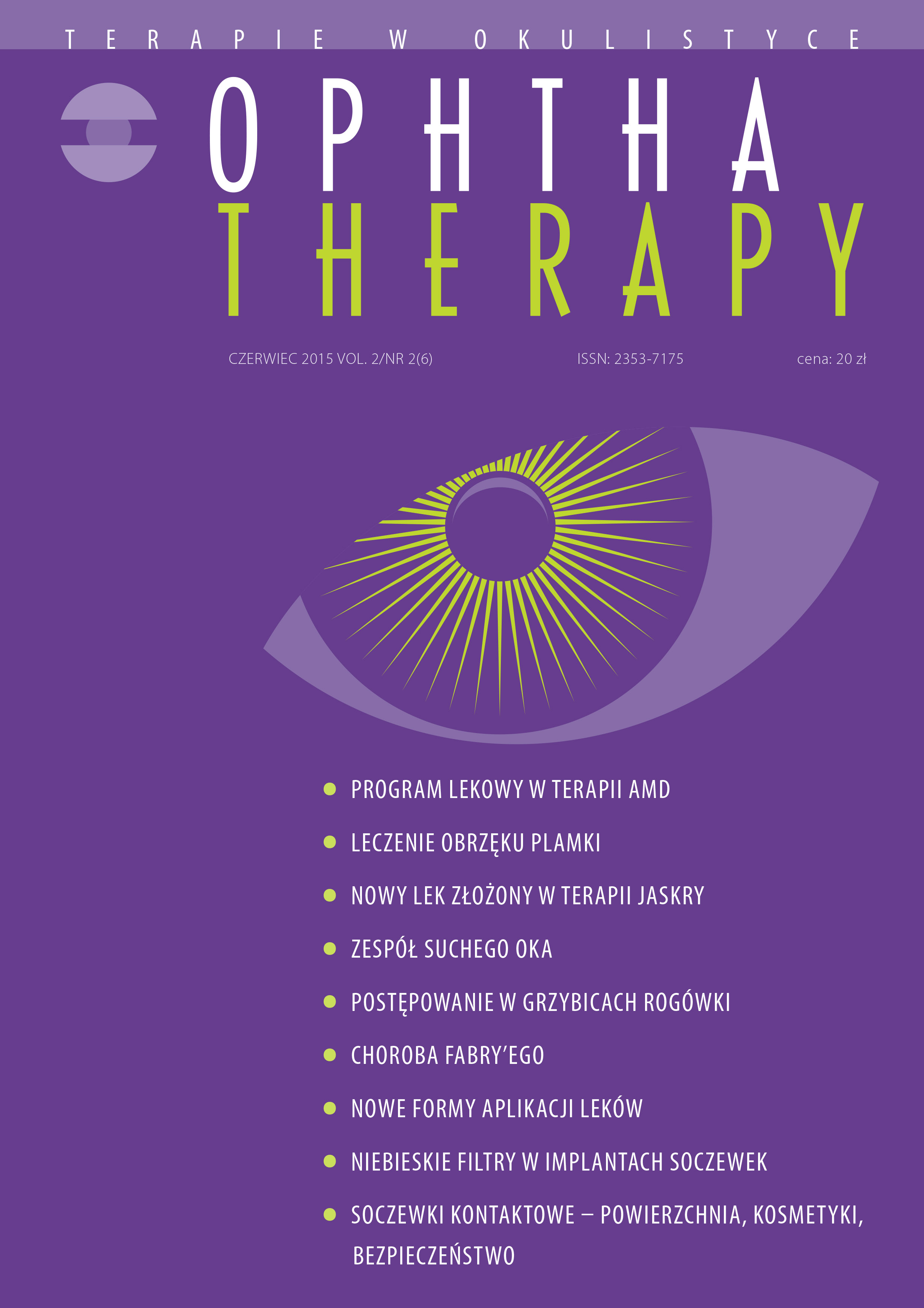Ocular manifestations of Fabry disease
Main Article Content
Abstract
Fabry disease is a X-linked lysosomal storage disorder.
Aim of the study: The aim was to document the ophthalmological manifestations of Fabry disease.
Material and methods: The study was conducted in a group of 12 patients (50% of male subjects); aged 14–63 years (mean 50.2). All patients underwent complete ophthalmologic examination.
Results: All patients reported normal intraocular pressure, and visual acuity. Changes in vessels of the conjunctiva were present in 4 males (66.7%) and 2 females (33.3%). Cornea verticillata appeared in 10 patients (83%): 5 men (83%) and 5 women (83%). Four males were diagnosed with posterior subcapsular cataract. Typical retinal changes were documented in all men and half of women.
Conclusions: Cornea verticillata was the most common symptom of ocular manifestation. More severe changes occurred in men.
Downloads
Article Details

This work is licensed under a Creative Commons Attribution-NonCommercial-NoDerivatives 4.0 International License.
Copyright: © Medical Education sp. z o.o. License allowing third parties to copy and redistribute the material in any medium or format and to remix, transform, and build upon the material, provided the original work is properly cited and states its license.
Address reprint requests to: Medical Education, Marcin Kuźma (marcin.kuzma@mededu.pl)
References
2. Rodriguez-Mari A, Coll MJ, Chabas A. Molecular analysis in Fabry disease in Spain fifteen novel GLA mutations and identification of a homozygous female. Hum Mutat. 2003; 22: 258.
3. MacDermot KD, Holmes A, Miners AH. Anderson-Fabry disease: Clinical manifestations and impact of disease in a cohort of 98 hemizygous males. J Med Genet. 2001; 38: 750-60.
4. Eng CM, Guffon N, Wilcox WR et al. Safety and efficacy of recombinant human alpha-galactosidase A replacement therapy in Fabry’s disease. N Engl J Med. 2001; 345: 9-16.
5. Bazan-Socha S, Miszalski-Jamka T, Petkow-Dimitrow P et al. Stabilizacja kliniczna choroby Fabry’ego w toku 54-miesięcznej enzymatycznej terapii zastępczej – ciąg dalszy obserwacji. Pol Arch Med Wewn. 2007; 117: 260-5.
6. Mehta A, Beck M, Eyskens F et al. Fabry disease: a review of current management strategies. QJM. 2010; 103: 641-59.
7. Germain DP. Fabry disease. Orphanet J Rare Dis. 2010; 22: 5-30.
8. Nguyen TT, Gin T, Nicholls K et al. Ophthalmological manifestations of Fabry disease: a survey of patients at the Royal Melbourne Fabry disease Treatment Centre. Clin Experiment Ophthalmol. 2005; 33: 164-8.
9. Sodi A, Ioannidis AS, Mehta A et al. Ocular manifestations of Fabry’s disease: data from the Fabry outcome survey. Br J Ophthalmol. 2007; 91: 210-4.
10. Orssaud C, Dufier J, Germain D. Ocular manifestations in Fabry disease: a survey of 32 hemizygous male patients. Ophthalmic Genet. 2003; 24: 129-39.
11. Hirano K, Murata K, Miyagawa A et al. Histopathologic findings of cornea verticillata in a womean heterozygous for Fabry’s disease. Cornea. 2001; 20: 233-6.
12. Wasielica-Poslednik J, Pfeiffer N, Reinke J et al. Confocal laser-scanning microscopy allows differentiation between Fabry disease and amiodarone-induced keratopathy. Graefes Arch Clin Exp Ophthalmol. 2011; 249: 1689-96.
13. Sodi A, Guarducci M, Vauthier L et al. Computer assisted evaluation of retinal vessels tortuosity in Fabry disease. Acta Ophthalmol. 2013; 91: 113-9.

